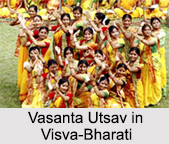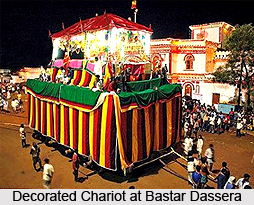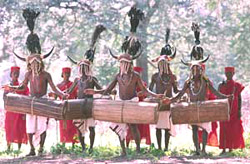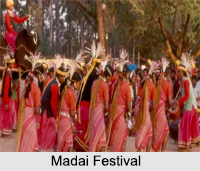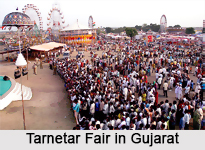 The Tarnetar Fair is one of the most important fairs of Gujarat. The fair is attended by Koli tribe, the Rabari tribe, the Bharward tribe, the Khant tribe, the Khanbi tribe, the Charan tribe and the Kathi tribe. All these tribes mingle together to enjoy and celebrate the legendary marriage of Draupadi with Arjuna in the popular epic Mahabharata. The fair retraces its origin to the times of the Mahabharata. Arjuna was the third brother among the five Pandavas of Hastinapur who married Draupadi, the daughter of king Dhrupad.
The Tarnetar Fair is one of the most important fairs of Gujarat. The fair is attended by Koli tribe, the Rabari tribe, the Bharward tribe, the Khant tribe, the Khanbi tribe, the Charan tribe and the Kathi tribe. All these tribes mingle together to enjoy and celebrate the legendary marriage of Draupadi with Arjuna in the popular epic Mahabharata. The fair retraces its origin to the times of the Mahabharata. Arjuna was the third brother among the five Pandavas of Hastinapur who married Draupadi, the daughter of king Dhrupad.
Trinetreshwer Mahadev Fair is organized every year on the 4th, 5th and 6th day of the Shukla Paksha. According to English calendar the fair is organized between the month of August and September. Tarnetar Fair is elaborately celebrated in Tarnetar which is a village near the industrial town of Thangadli in Surendranagar district in the region of Saurashtra. The fair is celebrated for three days at the premises of the 14th century Temple of Shiva or Trinetreshwer meaning three-Eyed God. The temple is built beautifully in a traditional style on the banks of a rivulet where the reflection of the temple can be seen.
According to history the `Historic Swayamvara` of Draupadi took place in Tarnetar. The Tarnetar fair in Saurashtra represents an exclusive amalgamation of folk music, folk art and colour. The fair highlights the true folk nature of the fair with representations of folk dances like the Rasada which is a Gujarati folk dance. It is performed by hundreds of women who dance gracefully forming a single circle. Instruments like four drums and jodja pava i.e. double flutes accompany the girls in their dance. People visiting the fair get mesmerized by the number of bhajan mandalis who are a group of devotees singing songs in praise of the Lord. These bhajan mandalis sing bhajans and kirtans in accompaniment to the engaging tune of folk instruments like khartals, pakhawaj, dhol and tabla.
Dance of Tarnetar Fair
The Tarnetar Fair also organizes folk dances like the energetic and playful Ras Garba. This elegant dance is performed by both men and women who dance forming two circles. The dancers move in clockwise and anti-clockwise directions playing dandiyas or sticks in their hands. The Hudo Dance is also organized in the fair which is performed by the shepherd community. In this dance the performers clap in a rhythmic manner while duplicating the movements of two sheep ramming their heads.
The Tarnetar fair has a local essence added to it. Apart from the dances food stalls, cattle show, competitive sports and exhibitions of embroidery are also organized The most distinguishing aspect is the famous Tarnetar Chhatri (umbrella) embroidered by the bachelors to attract the attention of unmarried girls. The extensive mirror work, embroidery and delicate lacework of the umbrellas serve as a treat for the eyes. The Kolis of Saurashtra were the first to initiate the custom of embroidering umbrellas, which are exquisitely elaborate in terms of embellishments. The embroidery work of each remains unique. The beadwork and patchwork of the umbrellas are unique. Small colorful handkerchiefs are also attached all around the edge that attracts further attention. The fair, denotes the rich heritage of Saurashtra and draws thousands of visitors from various parts of the country and abroad. Gujarat Tourism makes arrangements from Ahmedabad and Rajkot district to visit Tarnetar during this fair. They also provide tented accommodation for their visitors.

